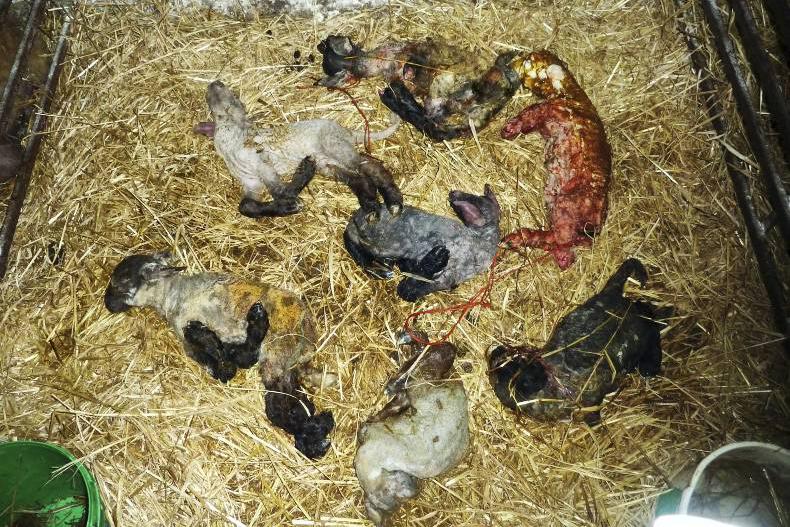Cause
The infection is spread by the bite of infected midges. The female needs a blood meal for her eggs to mature so that they can be laid. Midges are most active from April to December in line with the breeding season for sheep and cattle.
The greatest losses are associated with the development of deformed foetuses. The period of susceptibility in sheep is between day 28 and day 56 of pregnancy while in cattle it is between day 62 and day 170 of pregnancy. If ewes and cows at these stages of pregnancy are exposed to Schmallenberg infected midges for the first time, they are at the greatest risk of producing a deformed foetus.
Symptoms
Schmallenberg virus can affect both cattle and sheep and can lead to abortions, stillbirths and congenital deformities. These deformities can include the fusion of joints, resulting in conditions such as twisted necks (torticollis), fused limb joints (arthrogryposis) and curved back (kyphosis). The lower jaw may also be abnormally short (undershot).

The brain of affected newborn calves and lambs may be grossly underdeveloped, resulting in clinical signs of a nervous nature – uncoordination, trembling and partial paralysis. In cattle it is known to also cause fever, milk drop and a reduced appetite and diarrhoea in adult cattle at the time of infection.


Deformed lambs and calves have no long-term future, even if they survive. However, once their dams recover after giving birth to them, and don’t develop any infections, there will be no long-term implications.
In continental Europe, Schmallenberg virus was identified as a cause of milk drop syndrome in several dairy herds, although it has never been confirmed as such here in Ireland.
Treatment
There is no treatment available for this condition.
Prevention and control
Animals which have had a natural infection develop acquired resistance to the infection. There is no treatment for the condition.
While there was a vaccine on the market for this condition, it was subsequently removed from the market.






 This is a subscriber-only article
This is a subscriber-only article










SHARING OPTIONS: